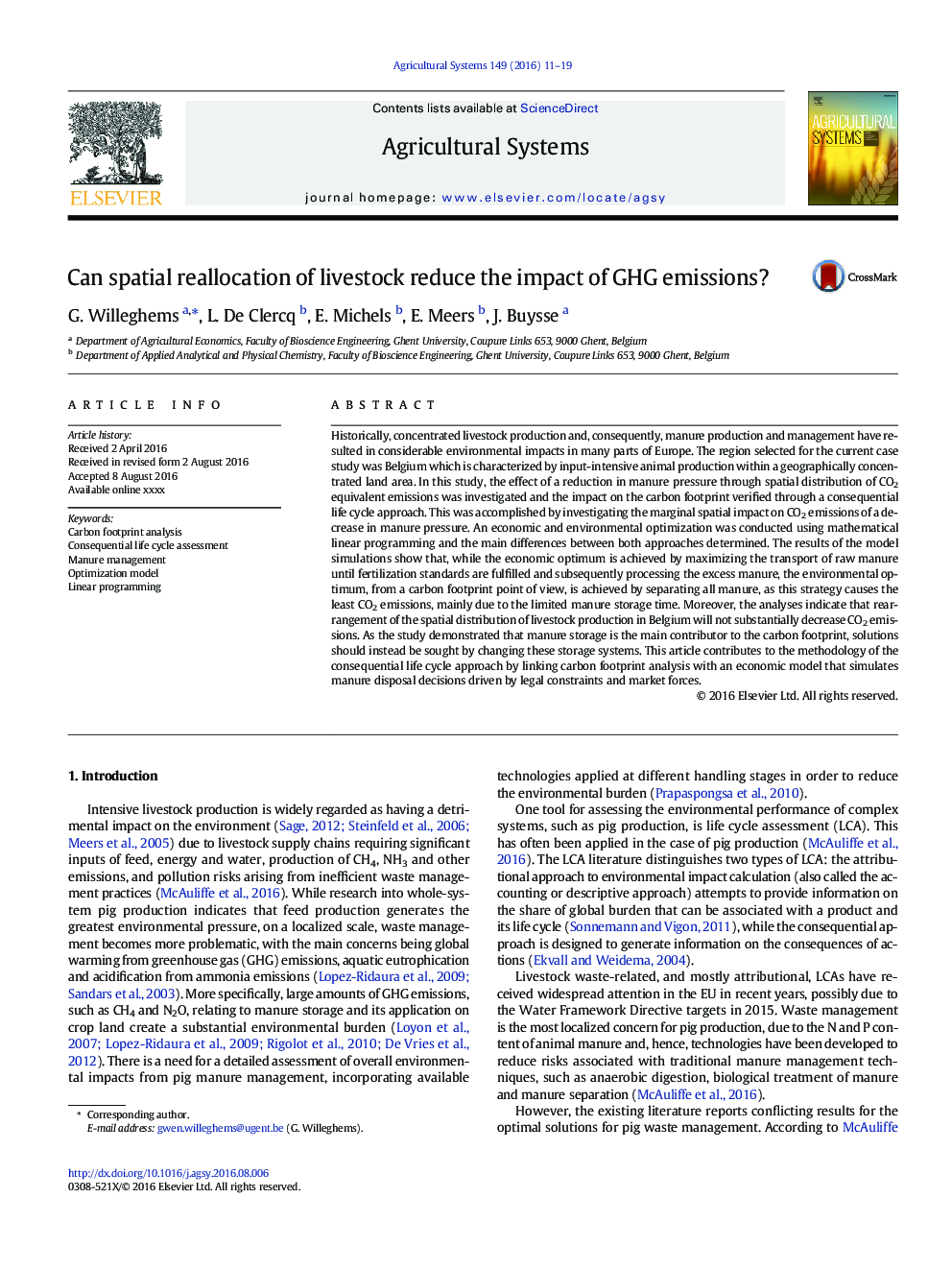| کد مقاله | کد نشریه | سال انتشار | مقاله انگلیسی | نسخه تمام متن |
|---|---|---|---|---|
| 6368235 | 1623221 | 2016 | 9 صفحه PDF | دانلود رایگان |
عنوان انگلیسی مقاله ISI
Can spatial reallocation of livestock reduce the impact of GHG emissions?
ترجمه فارسی عنوان
آیا می توان مجدد فضایی دام ها تاثیرات انتشار گازهای گلخانه ای را کاهش داد؟
دانلود مقاله + سفارش ترجمه
دانلود مقاله ISI انگلیسی
رایگان برای ایرانیان
کلمات کلیدی
تجزیه و تحلیل رد پای کربن، ارزیابی چرخه حیات، مدیریت کود، مدل بهینه سازی، برنامه ریزی خطی،
موضوعات مرتبط
علوم زیستی و بیوفناوری
علوم کشاورزی و بیولوژیک
علوم کشاورزی و بیولوژیک (عمومی)
چکیده انگلیسی
Historically, concentrated livestock production and, consequently, manure production and management have resulted in considerable environmental impacts in many parts of Europe. The region selected for the current case study was Belgium which is characterized by input-intensive animal production within a geographically concentrated land area. In this study, the effect of a reduction in manure pressure through spatial distribution of CO2 equivalent emissions was investigated and the impact on the carbon footprint verified through a consequential life cycle approach. This was accomplished by investigating the marginal spatial impact on CO2 emissions of a decrease in manure pressure. An economic and environmental optimization was conducted using mathematical linear programming and the main differences between both approaches determined. The results of the model simulations show that, while the economic optimum is achieved by maximizing the transport of raw manure until fertilization standards are fulfilled and subsequently processing the excess manure, the environmental optimum, from a carbon footprint point of view, is achieved by separating all manure, as this strategy causes the least CO2 emissions, mainly due to the limited manure storage time. Moreover, the analyses indicate that rearrangement of the spatial distribution of livestock production in Belgium will not substantially decrease CO2 emissions. As the study demonstrated that manure storage is the main contributor to the carbon footprint, solutions should instead be sought by changing these storage systems. This article contributes to the methodology of the consequential life cycle approach by linking carbon footprint analysis with an economic model that simulates manure disposal decisions driven by legal constraints and market forces.
ناشر
Database: Elsevier - ScienceDirect (ساینس دایرکت)
Journal: Agricultural Systems - Volume 149, November 2016, Pages 11-19
Journal: Agricultural Systems - Volume 149, November 2016, Pages 11-19
نویسندگان
G. Willeghems, L. De Clercq, E. Michels, E. Meers, J. Buysse,
